Spring is a time of awakening nature and allergic reactions. How to treat an allergy to flowering, if, nevertheless, it took you by surprise, and your body could not cope on its own with the help of its protective functions. In this article, we will help to cope with its manifestations and tell you what medications, as well as folk ways, you can deal with allergic conditions.
Allergy is a disease that is difficult to detect, determine the accuracy, and complete recovery in most cases is not possible. To support and protect yourself from complex symptoms, you can use various, affordable medicines and herbs. Allergies can be genetic in nature, and before taking steps towards self-treatment, we want to warn against mistakes and be sure to consult a doctor. Each organism is individual and what works well for one person may be contraindicated for another, or the effect of the selected drug may have a minimal medical effect.
Plants, flowers that can cause allergies
Residents of large cities are often more prone to allergic reactions than those living in villages and suburbs. Polluted air, the spread of dust, and with it the pollen of various plants quickly spreads through the air channels and enters a weakened immune system. Lack of vitamins, fast food, which is a significant percentage of food due to the small amount of time for cooking due to employment at work, unfavorable air background, constantly polluted by gases emitted into the atmosphere from cars, factories, factories - all this leads to a weakening of the immune system.
In the case of allergens and the immune system, a paradox occurs. The immune system becomes an "ally" of allergens, it begins to produce very actively substances that should be aimed at combating allergies, but it turns out that the body simply cannot cope with the aggressor from the outside and thus deceives itself by falsely active production of anti allergens.
An allergy to flowering is called hay fever. Pollinosis is an allergic disease caused by the pollen of trees and plants. Pollinosis affects the mucous membranes of the respiratory tract and eyes. Allergens contained in pollen found in plants that are pollinated by the wind and cause allergic reactions, namely spring allergies.
What kind of plants unwittingly become distributors of allergens and cause spring allergies:
Flower meadows, flower beds with planted plants, flowers in the city, decorating the streets, parks and squares, in addition to beauty, they carry aggressive allergens pollinated by the wind.
|
|
All listed trees and shrubs are dangerous if we consider them on a scale of allergen spreaders.
Also, plants that can cause an allergic reaction during the spring flowering period include:
|
|
Flowers like these, which we love, can carry an immediate threat of causing allergies. These include:
|
|
Allergy symptoms caused by a period of violent flowering of plants and flowers
Allergy symptoms are very similar to those of acute respiratory infections (ARI). Often we run to the pharmacy and drop aspirin, tempalgin, citramon and other drugs to bring down the fever, headache, swelling of the nasal mucosa, without even thinking about the fact that these and other manifestations may have an allergy to flowering, and not acute respiratory infections. . So, let's look at the most common symptoms and try to understand and distinguish between the symptoms of allergic reactions and the state of the disease.
The main symptoms of allergies:
- sneezing;
- Runny nose;
- Edema of mucous membranes (nose, eyes);
- Urticaria (eruptions of a rash on the body);
- Possible rise in temperature;
- Cough with irritable effect.
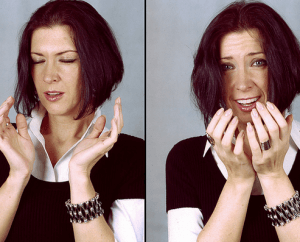 Allergy is isolated by the fact that the exacerbation begins quickly and can also quickly disappear as soon as the causative agent of the allergen ceases to act. The period of the beginning and end of flowering of a particular type of plant, flowers. In the case of a disease of the body, the symptoms do not appear so quickly and do not disappear. Sensitization of the human body is due to increased sensitivity of nerve cells. Sensitization - Expansion of the spectral region of sensitivity of photographic materials, increased sensitivity to stimuli by cells and tissues of the human body.
Allergy is isolated by the fact that the exacerbation begins quickly and can also quickly disappear as soon as the causative agent of the allergen ceases to act. The period of the beginning and end of flowering of a particular type of plant, flowers. In the case of a disease of the body, the symptoms do not appear so quickly and do not disappear. Sensitization of the human body is due to increased sensitivity of nerve cells. Sensitization - Expansion of the spectral region of sensitivity of photographic materials, increased sensitivity to stimuli by cells and tissues of the human body.
Any allergy, first of all, is treated by identifying the allergen and “refusing” it, blocking any possibility of interaction with it. In the case of allergies caused by flowering plants, it is virtually impossible to protect yourself from pollen from allergens, they spread everywhere through the air, wherever you are. Pollen spreads everywhere and whether we like it or not, it gets and settles on our mucous membranes, gets inside the bronchi when inhaled, comes into contact with the skin and causes allergy symptoms. It is rather difficult for us to recommend any one direction of treatment, but we can help with possible recommendations to alleviate the condition and the ability to protect ourselves from preventing annoying symptoms.
Here are some tips we offer you:
- Make it a habit to keep a calendar of flowering of a particular plant, flowers that cause you spring allergies. Thus, you can control the process of a possible allergic reaction.
- The safest time of the day is considered to be the time after lunch, sunset. During these hours, the plants go into a state of sleep and the flowering process stops. The morning hours are the most dangerous, since any living organism, plants and flowers are most active in their vital activity of flowering.
- Fans of dachas, meadows, fields with a variety of herbs, plants, trees should limit themselves to visits to such places, but it is better to completely exclude them during the spring flowering period, so as not to complicate the process of manifestation of allergic symptoms.
- Remember that water is good for allergies. Wash your hands often, rinse the mucous membranes of the eyes and nasopharynx with water.
- Drink plenty of fluids, preferably plain water or mineral water, at least 2-2.5 liters per day. Water helps the rapid release of toxic, allergenic substances from the body through the normal function of urination, as well as excretion through the pores of the skin in the form of sweat.
- It would not be superfluous to close the windows with a mosquito net so that the throughput of pollen decreases tenfold, and does not get into your home. Rinse the nets 2-3 times a week under cold water, getting rid of pollen particles, dust stuck in the micro mesh fabric.
- Wipe dust with a damp cloth from surfaces in the house, apartment. Daily.
- Wet floor cleaning. Daily.
- Pour water into various vessels (bottles, cans, buckets, basins), place it on the floor in the room. Water is a good dust absorber. It will create a good microclimate in the house, apartment supported by comfortable humidity.
- Take a shower several times a day with cool water.
It is unacceptable to leave an allergy to flowering without attention. In the case of severe diseases, bronchial asthma, which can occur as a result of a severe form of allergy, unfortunately does not end in anything good. Bronchial asthma is a disease in which you are forced to constantly carry a medical aerosol with you, periodically spraying it into your mouth, as bouts of severe coughing and suffocation accompany this disease.
Bronchial contraction of the smooth muscles of the bronchus cells leads to irritation of the cells, coughing attacks with an irritating effect of the throat, and even death in a state of suffocation (oxygen access is blocked), if the aerosol is not used in time. Various manifestations of rashes in the form of rubella, skin blisters and nervous disorders, which also play a significant role in allergy symptoms. A weakened body, allergic irritants and symptoms lead to a state of a person's nervous state manifested in irritability, loss of sleep and other unpleasant manifestations.
Allergy to flowering, how to treat
An antihistamine and anti-inflammatory scheme of helping drugs, both medical and folk, is used. In this or that method of treatment, only a doctor can prescribe the right drugs and describe a safe and effective treatment regimen.
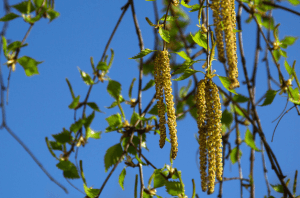 To identify, identify the allergen causing allergies, so-called skin tests are carried out. In spring, as a rule, this method is not as productive in terms of results as in autumn. In autumn, the flowering time is over and the skin test method is the most accurate according to the test results. On a small area of the skin, as a rule, it is a hand that irritates the surface, causing a small scratch, various allergens are dripped from a pipette or syringe. If this or that allergen causes discomfort to the body and will cause further allergies during the spring flowering period, after half an hour the area on which the allergen reagent was applied will turn red. Thus, by experience, an allergen that brings discord into our body will be revealed.
To identify, identify the allergen causing allergies, so-called skin tests are carried out. In spring, as a rule, this method is not as productive in terms of results as in autumn. In autumn, the flowering time is over and the skin test method is the most accurate according to the test results. On a small area of the skin, as a rule, it is a hand that irritates the surface, causing a small scratch, various allergens are dripped from a pipette or syringe. If this or that allergen causes discomfort to the body and will cause further allergies during the spring flowering period, after half an hour the area on which the allergen reagent was applied will turn red. Thus, by experience, an allergen that brings discord into our body will be revealed.
Immunotherapy is the introduction of a small amount of allergens into the body, thereby reducing sensitivity, susceptibility to pollen and, as a rule, the percentage of diseases caused by this allergen decreases. The winter course is most effective in immunotherapy.
Antihistamines, derivatives of cromoglycic acid, which are stabilizers of mast cell membranes. Antihistamines and cromoglycic acids release inflammatory mediators.
Mast cells are a type of connective, loose cell on the surface of mucous surfaces in humans and animals. The mast cell contains groups of biologically active substances, the release of which can cause allergy symptoms.
The range of drugs that help reduce the symptoms of allergies is well represented in pharmacies and with the help of a specialist (doctor), you can choose a treatment with one or another medicine. Perhaps it can be drops that need to be instilled into the mucous membrane of the eye (in the case of conjunctivitis frolicking), perhaps it will be a bronchodilator inhaler for asthma attacks.
List of antihistamines for allergies
Antihistamines have three generation forms.
I - sedative drugs;
II - non-sedative drugs;
III - drugs without cardiotoxic and sedative effects, are active metabolites.
- I generation of drugs: Dimedrol, diazolin, suprastin, tavegil, peritol, fenkarol, pipolfen.
- II generation of drugs: Gistalong, Terfenadin, Fenistil, Semprex, Claritin.
- III generation of drugs: Zirtek, Cetrin, Fexofendan.
Be healthy!
If you have any questions, please contact our consultants



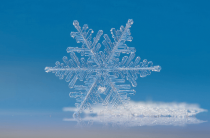
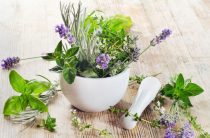


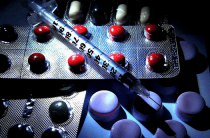
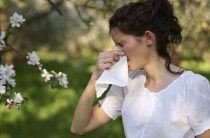







I used the salt cave as a rescue. There were 15 sessions in the Halocenter. It has become much easier. On extremely became better since morning to breathe and eyes do not redden. Decreased cough. I recommend.
We constantly spray in the nose of children, washing from fluff, dust, pollen. Now they began to buy Morenazal instead of Aquamaris, it is cheaper and just as effective. At least the flaws were not noticed, the main thing is that the nose breathes and is natural.